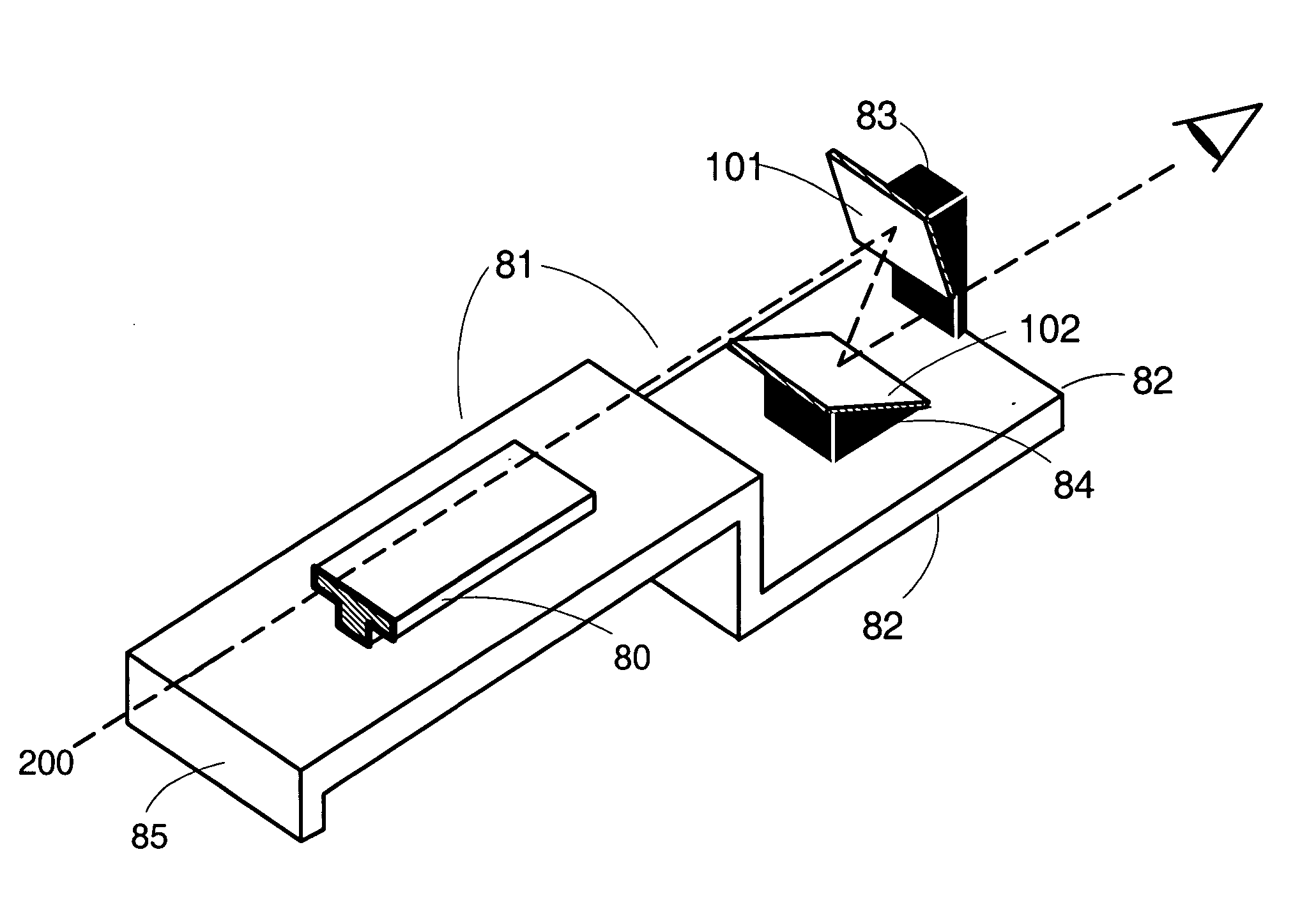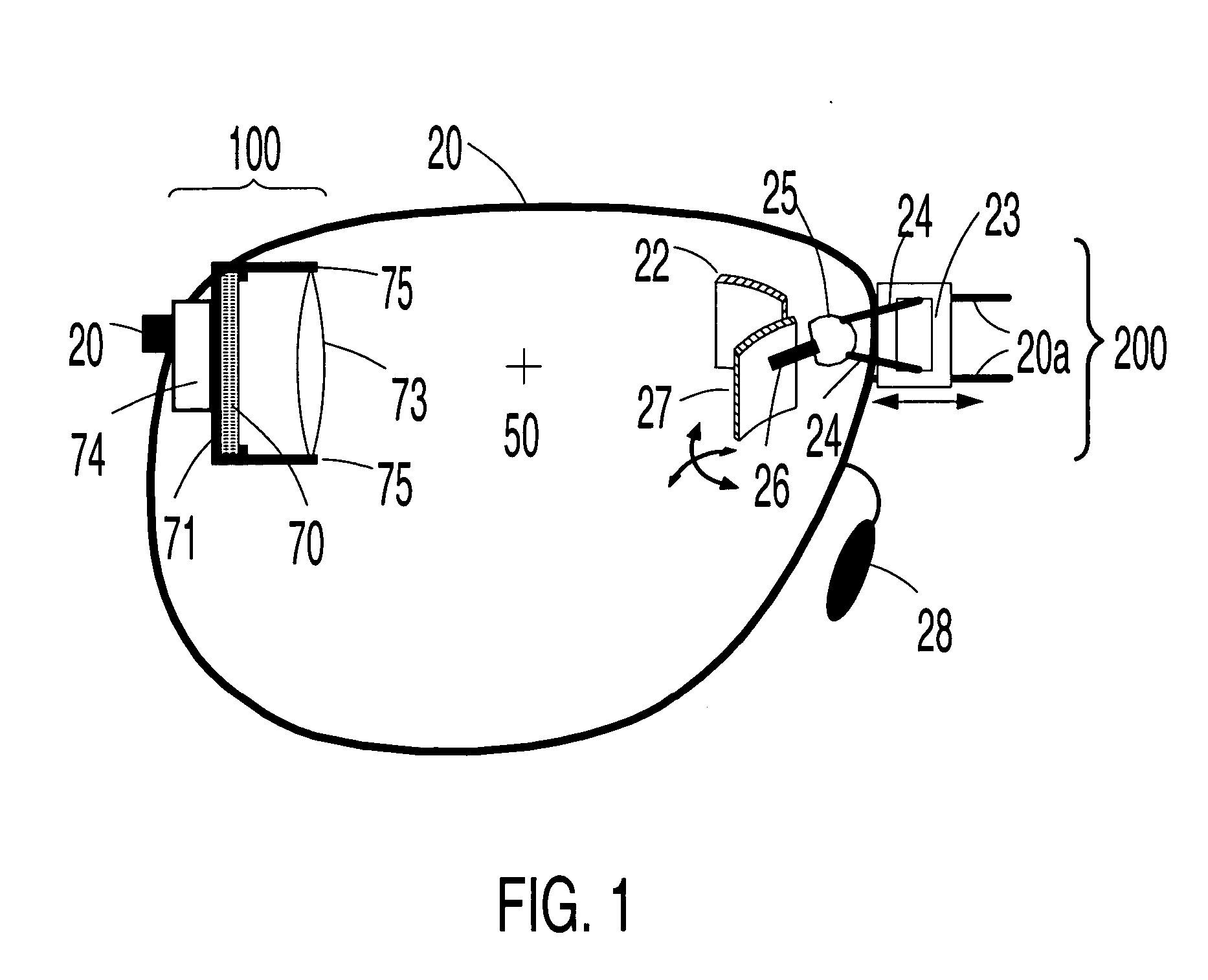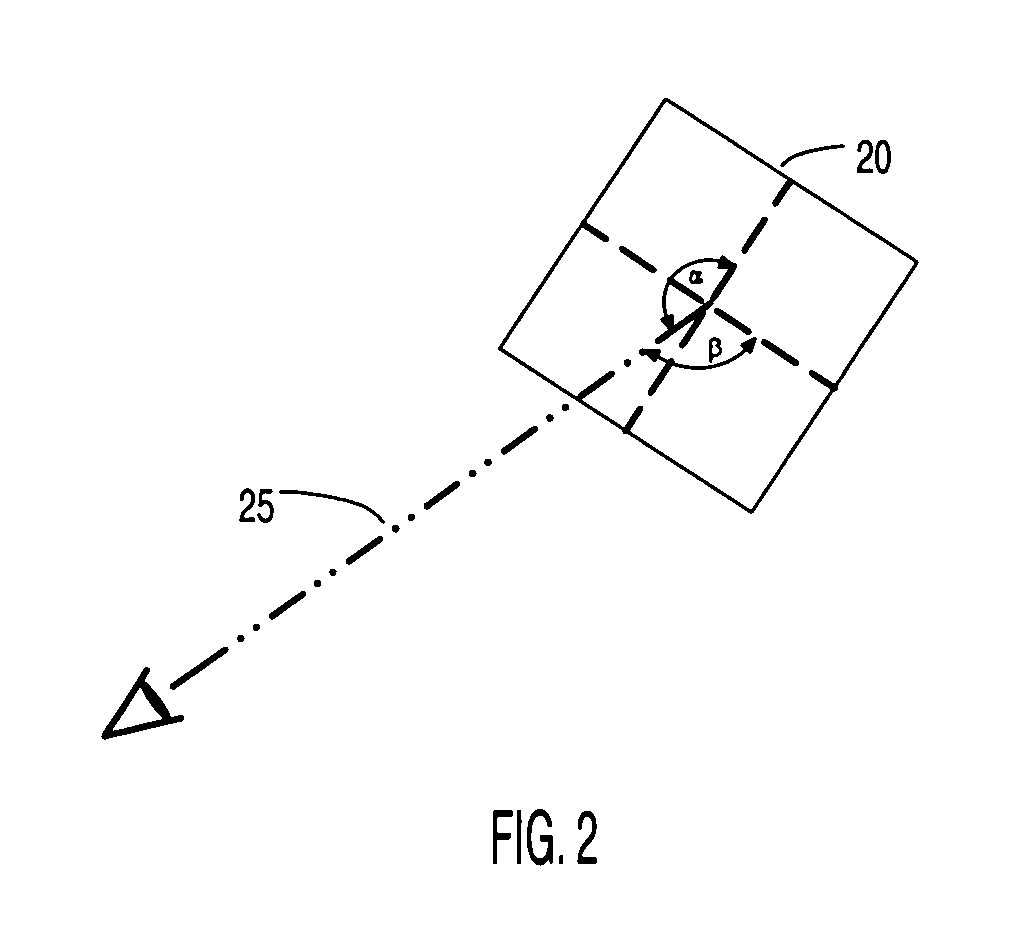Head-mounted virtual display apparatus for mobile activities
- Summary
- Abstract
- Description
- Claims
- Application Information
AI Technical Summary
Benefits of technology
Problems solved by technology
Method used
Image
Examples
second embodiment
In the present invention, the near-eye optic receives illumination indirectly from the magnifying stage via a single light-deflecting element, termed an adjacent folding optic (AFO) herein. More specifically, the magnifying stage is disposed for simultaneous illumination reception from the real image source for first intermediate (real or virtual) image formation and illumination transmission to the adjacent folding optic. The adjacent folding optic is disposed for simultaneous illumination reception from the magnifying stage for second intermediate (real or virtual) image formation and illumination redirection to the near-eye optic. The near-eye optic is disposed for simultaneous illumination reception from the adjacent folding optic for observable virtual image formation and illumination redirection to the user's eye. In this embodiment, the first alignment means may be either a passive alignment means or an active alignment means; and the second alignment means may be either a pa...
third embodiment
In the present invention, the near-eye optic receives illumination indirectly from magnifying stage via a pair of light-deflecting elements. The light deflecting folding optic nearest the magnifying stage is termed the non-adjacent folding optic. The light deflecting folding optic nearest the near-eye optic is termed the adjacent folding optic. More specifically, the magnifying stage is disposed for simultaneous illumination reception from the real image source for first intermediate (real or virtual) image formation and illumination transmission to the non-adjacent folding optic. The non-adjacent folding optic is disposed for simultaneous illumination reception from the magnifying stage for second intermediate (real or virtual) image formation and illumination redirection to the adjacent folding optic. The adjacent folding optic is disposed for simultaneous illumination reception from the non-adjacent folding optic for third intermediate (real or virtual) image formation and illumi...
PUM
 Login to View More
Login to View More Abstract
Description
Claims
Application Information
 Login to View More
Login to View More - R&D
- Intellectual Property
- Life Sciences
- Materials
- Tech Scout
- Unparalleled Data Quality
- Higher Quality Content
- 60% Fewer Hallucinations
Browse by: Latest US Patents, China's latest patents, Technical Efficacy Thesaurus, Application Domain, Technology Topic, Popular Technical Reports.
© 2025 PatSnap. All rights reserved.Legal|Privacy policy|Modern Slavery Act Transparency Statement|Sitemap|About US| Contact US: help@patsnap.com



